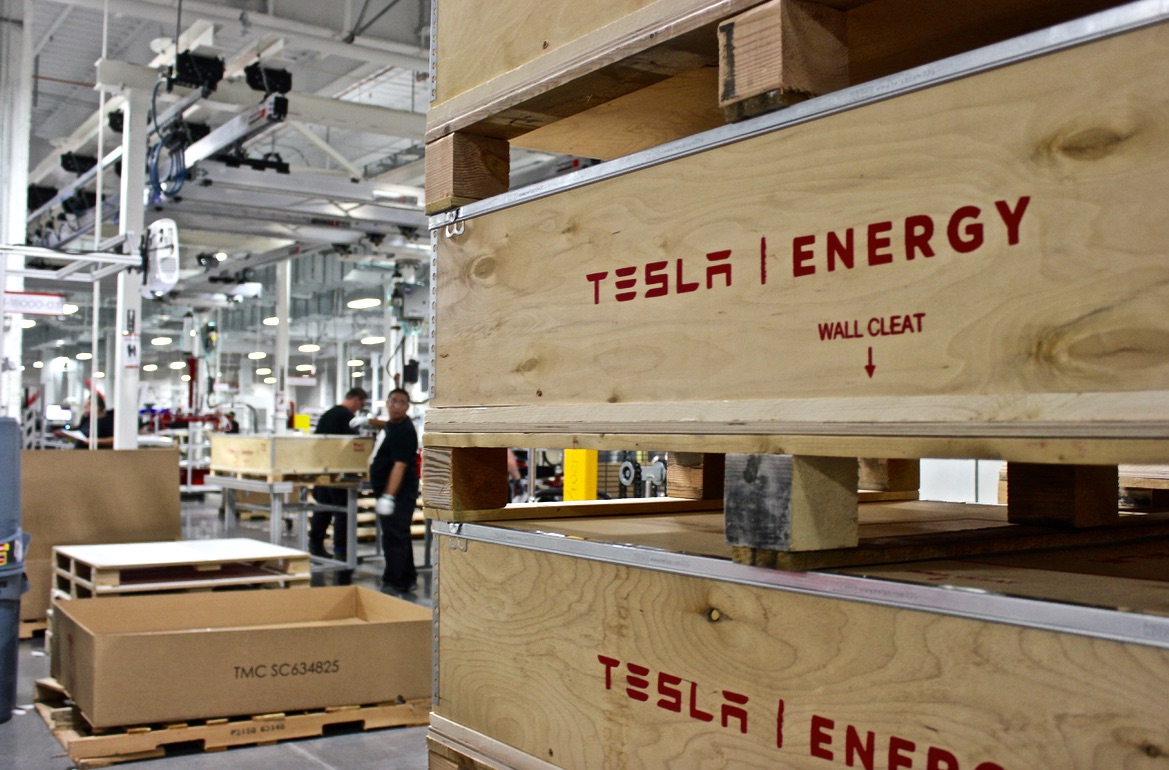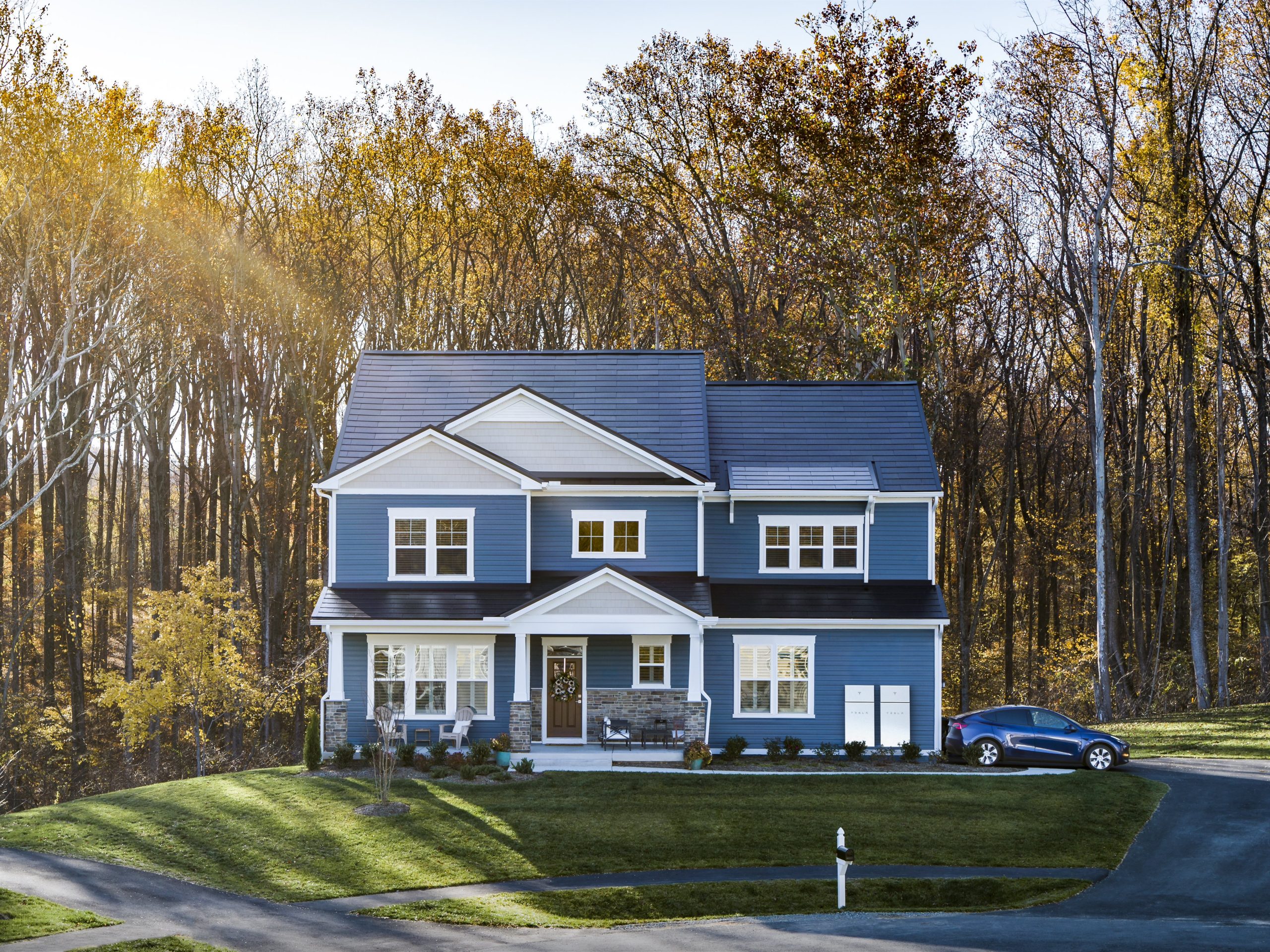Energy
Tesla completes 22 Powerpack installation for PG&E outside San Francisco

Tesla has completed the installation of a 2MWh Powerpack system for Pacific Gas & Electric in Browns Valley near San Francisco, making it the second utility-scale Powerpack project the company has completed in California.
The Browns Valley project, designed and installed by Cupertino Electric, is made up of 22 Tesla Powerpack systems which use battery cells manufactured at the company’s Gigafactory plant in Nevada. Total capacity of the system is half a megawatt — enough to power 380 homes for up to four hours. Demand can shift from moment to moment. Batteries can respond to such transitory needs instantaneously in a way that a peaker plant cannot.
The California legislature requires utility companies to use storage solutions for excess electricity produced by solar panels during the day so it can be used later when demand spikes — usually in the late afternoon and early evening hours when people are getting home from work. This approach, known as “time shifting” — reduces the need to build so-called peaker plants, generating facilities that sit idle most of the day but get fired up whenever extra electricity is needed.
Electrical storage is not a new idea. Since 1984, PG&E has relied on a pumped storage facility in the Helms Valley high up in the Sierra Nevada mountains east of San Francisco. That installation uses excess electricity to pump water uphill during the day so it can flow back downhill later, turning hydroelectric turbines as it falls. It has a total capacity of 1.2 megawatts.
But such projects require years of planning, permitting, and construction. So do natural gas fired facilities. The allure of battery storage is that it can be completed quickly and can be sited close to the grid structure it serves. “It’s pretty modular — you can scale up and down as you need,” said Mike Della Penna, PG&E’s project manager for the Browns Valley installation.
Battery storage is still relatively expensive (neither PG&E nor Tesla would reveal the cost of the Browns Valley installation reports the SF Gate), but the speed with which battery storage facility can be designed, built, and brought online helps to offset some of that additional cost. Taking a longer view, firing up a peaker plant is expensive. Eliminating that cost over a period of years will help balance out the initial investment.
And battery costs are dropping faster than most people anticipated. The second generation Tesla Powerwall home battery system came on the market barely one year after the original went on sale. It has double the capacity but actually costs less because the inverter is built in. Tesla does not reveal the cost of its grid scale Powerpack batteries, but it is a safe assumption that a similar drop in price applies to them as well.
Grid scale battery storage is still in its infancy and all stakeholders are exploring the least expensive and most efficient way to make use of it going forward. PG&E and Tesla are working together on a pilot project that uses Powerwall batteries in homes and businesses in the Bay Area. The total capacity of the distributed storage will be equal to that of the Browns Valley project. PG&E will be able to study the performance of both systems — one distributed and one centralized — to learn how each benefits the local grid. “They’re each with their own challenges and opportunities,” Della Penna says. “We’ve structured it so we’ll have a lot of really good learning here.”
Elon Musk has said he expects the storage battery business to be larger than Tesla’s automobile business one day. The lessons learned from projects like Mira Loma and Browns Valley will become the foundation for the Tesla’s grid storage business in the future.
Interested in solar? Get a solar cost estimate and find out how much a solar system would cost for your home or business.

Energy
Tesla starts hiring efforts for Texas Megafactory
Tesla’s Brookshire site is expected to produce 10,000 Megapacks annually, equal to 40 gigawatt hours of energy storage.

Tesla has officially begun hiring for its new $200 million Megafactory in Brookshire, Texas, a manufacturing hub expected to employ 1,500 people by 2028. The facility, which will build Tesla’s grid-scale Megapack batteries, is part of the company’s growing energy storage footprint.
Tesla’s hiring efforts for the Texas Megafactory are hinted at by the job openings currently active on the company’s Careers website.
Tesla’s Texas Megafactory
Tesla’s Brookshire site is expected to produce 10,000 Megapacks annually, equal to 40 gigawatt hours of energy storage, similar to the Lathrop Megafactory in California. Tesla’s Careers website currently lists over 30 job openings for the site, from engineers, welders, and project managers. Each of the openings is listed for Brookshire, Texas.
The company has leased two buildings in Empire West Business Park, with over $194 million in combined property and equipment investment. Tesla’s agreement with Waller County includes a 60% property tax abatement, contingent on meeting employment benchmarks: 375 jobs by 2026, 750 by 2027, and 1,500 by 2028, as noted in a report from the Houston Business Journal. Tesla is required to employ at least 1,500 workers in the facility through the rest of the 10-year abatement period.
Tesla’s clean energy boom
City officials have stated that Tesla’s arrival marks a turning point for the Texas city, as it highlights a shift from logistics to advanced clean energy manufacturing. Ramiro Bautista from Brookshire’s economic development office, highlighted this in a comment to the Journal.
“(Tesla) has great-paying jobs. Not just that, but the advanced manufacturing (and) clean energy is coming to the area,” he said. “So it’s not just your normal logistics manufacturing. This is advanced manufacturing coming to this area, and this brings a different type of job and investment into the local economy.”
Energy
Tesla and Samsung SDI in talks over new US battery storage deal: report
The update was related by industry sources and initially reported by South Korean news outlets.

Recent reports have suggested that Tesla and Samsung SDI are in talks over a potential partnership to supply batteries for large-scale energy storage systems (ESS).
The update was related by industry sources and initially reported by South Korean news outlets.
ESS batteries to be built at Samsung’s Indiana plant
As noted in a report from Korea JoongAng Daily, the demand for energy storage systems has been growing rapidly in North America, thanks in no small part to the surge in AI investments across numerous companies. With this in mind, Tesla has reportedly approached Samsung SDI about a potential battery supply deal.
The deal is reportedly worth over 3 trillion Korean won (approximately $2.11 billion) and will span three years, according to The Korea Global Economic Daily. A battery supply deal with Samsung SDI could make sense for Tesla as the company already has a grid-scale battery, the Megapack, which is perfect for industrial use. Samsung SDI could simply supply cells for the EV maker.
Production of the batteries would reportedly take place at Samsung SDI’s joint venture factory with Stellantis in Indiana, which is currently under construction. Samsung SDI recently announced plans to use part of that plant’s EV lines to produce cells for ESS, with a targeted capacity of 30 GWh by the end of next year.
Tesla and Samsung’s partnership
At present, only a handful of manufacturers, including Korea’s LG Energy Solution, Samsung SDI, SK On, and Japan’s Panasonic, are capable of producing energy storage-scale batteries domestically in the United States. A Samsung SDI official issued a comment about the matter, stating, “Nothing has been finalized regarding cooperation with Tesla.”
The possible energy storage system deal adds another layer to Tesla’s growing collaboration with Samsung, which is already in line as a partner in the upcoming production of Tesla’s AI5 and AI6 chips. Early sample manufacturing of the AI6 is expected to begin in South Korea, with mass production slated for Samsung’s Texas-based Taylor foundry when it starts operations.
The AI6 chip will power Tesla’s next wave of high-volume projects, including the Optimus humanoid robot and the autonomous Cybercab service. Musk has called the partnership with Samsung a “real collaboration,” adding that he personally plans to “walk the line” at the Taylor facility to speed up progress.
Energy
Tesla VP hints at Solar Roof comeback with Giga New York push
The comments hint at possible renewed life for the Solar Roof program, which has seen years of slow growth since its 2016 unveiling.

Tesla’s long-awaited and way underrated Solar Roof may finally be getting its moment. During the company’s Q3 2025 earnings call, Vice President of Energy Engineering Michael Snyder revealed that production of a new residential solar panel has started at Tesla’s Buffalo, New York facility, with shipments to customers beginning in the first quarter of 2026.
The comments hint at possible renewed life for the Solar Roof program, which has seen years of slow growth since its 2016 unveiling.
Tesla Energy’s strong demand
Responding to an investor question about Tesla’s energy backlog, Snyder said demand for Megapack and Powerwall continues to be “really strong” into next year. He also noted positive customer feedback for the company’s new Megablock product, which is expected to start shipping from Houston in 2026.
“We’re seeing remarkable growth in the demand for AI and data center applications as hyperscalers and utilities have seen the versatility of the Megapack product. It increases reliability and relieves grid constraints,” he said.
Snyder also highlighted a “surge in residential solar demand in the US,” attributing the spike to recent policy changes that incentivize home installations. Tesla expects this trend to continue into 2026, helped by the rollout of a new solar lease product that makes adoption more affordable for homeowners.
Possible Solar Roof revival?
Perhaps the most intriguing part of Snyder’s remarks, however, was Tesla’s move to begin production of its “residential solar panel” in Buffalo, New York. He described the new panels as having “industry-leading aesthetics” and shape performance, language Tesla has used to market its Solar Roof tiles in the past.
“We also began production of our Tesla residential solar panel in our Buffalo factory, and we will be shipping that to customers starting Q1. The panel has industry-leading aesthetics and shape performance and demonstrates our continued commitment to US manufacturing,” Snyder said during the Q3 2025 earnings call.
Snyder did not explicitly name the product, though his reference to aesthetics has fueled speculation that Tesla may finally be preparing a large-scale and serious rollout of its Solar Roof line.
Originally unveiled in 2016, the Solar Roof was intended to transform rooftops into clean energy generators without compromising on design. However, despite early enthusiasm, production and installation volumes have remained limited for years. In 2023, a report from Wood Mackenzie claimed that there were only 3,000 operational Solar Roof installations across the United States at the time, far below forecasts. In response, the official Tesla Energy account on X stated that the report was “incorrect by a large margin.”








